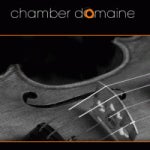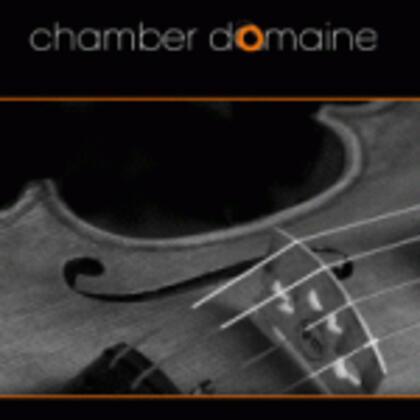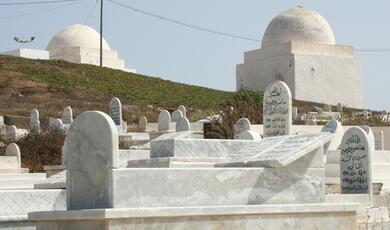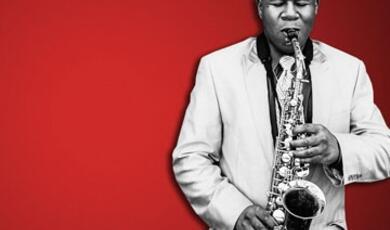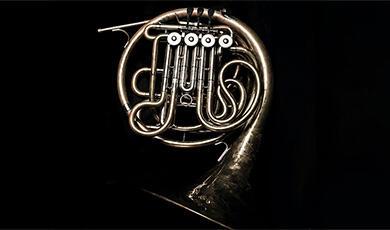Henryk Gorecki
Share
- Details
- Transcript
- Audio
- Downloads
- Extra Reading
6 December 2008 is the 75th birthday of Polish composer Henryk Górecki. Chamber Domaine have been working with Professor Adrian Thomas and will be producing a new CD to mark the occasion.
Following the talk by Professor Adrian Thomas, Emeritus Gresham Professor of Music, Chamber Domaine performed the following pieces by Henryk Górecki:
Two Sacred Songs for Baritone and Piano, Op. 30 (1971)
I. Zloze Na Panskim Stole:
I shall offer on the Lord's table
my human destiny.
I shall disclose in the Lord's House
the grief known to no-one.
Before the Master of Heaven
I shall lay down a handful of dreams.
To god in the highest
I shall describe my joys.
I shall place into his hands, in secret,
My daily life.
II. Glodny Chodze Pos Miescie:
Hungry I walk around the city.
Hungry I go through life.
I heard that in your house
you keep a store of the finest wheat.
I heard that Your Word
is honey filled with truth.
I come to your house
A man tired of hunger.
Variations for Violin and Piano, Op. 4 (1956)
Four Preludes for Piano, Op. 1 (1955)
1. Molto Agitato
2. Lento - recitative
3. Allegro Scherzando
4. Molto allegro quasi presto
Elementi for String Trio, Op. 19
Toccata for Two Pianos, Op. 2 (1955)
For more information about Górecki: Life Journey by Chamber Domaine, please follow this link.
Download Transcript
HENRYK GÓRECKI
Professor Adrian Thomas
It is wonderful to see Barnard's Hall packed to overflowing on this wintry night for this very special event. The object of our attention, the Polish composer Henryk Górecki, celebrates his 75th birthday this year. In fact his birthday falls on Saturday, on the Feast of Swiety Mikolaj, our St Nicholas. This is the day to which Polish children look forward perhaps with even more eagerness than Christmas Day, as it is on the Feast of St Nicholas when they are the centre of attention, presents and all. So tonight is our present to Górecki, to his wife, children and grandchildren. I hope that someone close to him with internet access will enable him to enjoy it. When I spoke to him yesterday at his home in Poland, he expressed his delight and gratitude that his birthday was being marked in this way at Gresham and sent his best wishes for a successful evening.
The Third Symphony
For many of us, one of the most memorable musical phenomena of the 1990s was the unexpected appearance of Górecki's Third Symphony, the 'Symphony of Sorrowful Songs'. This work exploded many conventions: in 1992-93, the Elektra-Nonesuch recording by the soprano Dawn Upshaw, with the London Sinfonietta, conducted by David Zinman, sold over a million copies worldwide and inspired over a dozen further recordings by other artists. It broke into the top of the popular music charts, an unheard-of event. It reached audiences who had not hitherto considered listening to a piece of classical music, let alone one written recently.
It also proved controversial in certain circles, largely because of the immediacy of its expressive impact (contemporary classical music, after all, should not have that!), because of its broad audience reach (contemporary music should not have that either) and because of its so-called 'holy minimalism', one of the labels with which some critics dismissed not only Górecki's sacred music but also that by other contemporary composers from the former Soviet bloc such as the Estonian Arvo Pärt and the Georgian Giya Kancheli. More destructively, I think, have been attempts to associate its transcendent message to world events, such as wars and famines. It has been used outside Górecki's original context in both documentary and feature films and, even today, barely a month goes by without its second movement being used as a convenient musical crutch for some harrowing or moving scene on television or radio. But, of course, the music is now public property and therefore its original text and context are frequently of no interest to its users, the more facile of whom reach for it with indiscriminate carelessness.
In all the amazing circus that surrounded the symphony, with the composer fêted across continents, it is easy to forget more profound truths about both him and this piece. Firstly, it was written way back in 1976, and its impact then was very local. Its qualities were gradually recognised, particularly in this country in the mid-1980s, and particularly by the conductor David Atherton and the BBC. Prior to that, rare copies of the first LP recording, with the soprano who gave the premiere in France in 1977, Stefania Woytowicz, had been handed from one enthusiast to the next potential convert with barely concealed excitement and amazement.
More importantly still, we are in danger of ignoring the Third Symphony's ground-breaking qualities. Not many other composers would dare to write a symphony - a symphony for soprano and orchestra - whose duration is almost an hour and which consists of just three slow movements in straightforward modal and diatonic idioms. It is also a very Polish work - the texts are in Polish and concern Polish religious culture and historical events. The music also makes use of Polish Easter hymns in the first movement and a Silesian folksong, alongside a clear reference to Chopin (and a more obscure one to Beethoven), in the finale. All in all, it is one of the most individual musical creations of the post-war period. It also belongs to a pantheon of major commemorative pieces that includes, from this country alone, Tippett's A Child of Our Timeand Britten's War Requiem.
The Essential Górecki
The Third Symphony was not, however, the first of Górecki's works to be performed and recorded in the West at that time. The London Sinfonietta had already held a weekend of concerts in London's Queen Elizabeth Hall in Spring 1989, combining Górecki with the Russian composer Alfred Schnittke, and the San Francisco-based Kronos Quartet had commissioned Górecki's First String Quartet and recorded it in 1990. Much of this activity was thanks to the promotional efforts of the London office of the music publishers Boosey & Hawkes, who had taken Górecki onto their books in 1987.
In the wake of the Third Symphony's success, however, record companies began looking for other, existing works to promote. Perhaps no CD was as significant as Olympia's The Essential Górecki (OCD 385) which appeared in 1993. Normally 'essential' has a commercial, 'must-have' connotation, such as 'The Essential Vivaldi', which is bound to include at least one of The Four Seasons.
The Essential Górecki was very different and would have been a shock to any lover of the Third Symphony expecting more of the same. It contained five works, all of them composed before 1970, in other words from the first part of Górecki's career, from a period almost completely unknown to Western audiences. The earliest of these works, Epitafium(1958), had been given its UK premiere during the London Sinfonietta's weekend in 1989, which is an indication of how much the West had to do to catch up on these early pieces. The rest of the Olympia CD's line-up ranged from the violent and colourful orchestral Scontri (Collisions, 1960), which was Górecki's graduation piece from the Music Academy in Katowice, to the reflective and, for 1965, the unique Refren (Refrain) for orchestra. The last piece on the CD was Old Polish Music (1969), an austere orchestral score based on one of the earliest examples of a Polish medieval organum, an anonymous two-part Benedicamus Domino. The service that Olympia provided was incalculable, because here was a CD which enriched our understanding of the composer and counteracted the arguments of those who thought that Górecki was only reflective, slow and minimal. Tonight's concert will fulfil a similar function, especially in the string trio significantly titled Elementi. But I leap ahead of myself.
Górecki and Poland
What is the nature of Górecki's Polishness as a creative artist? We need, perhaps, to remind ourselves that his family came from industrial Silesia, a little distance from the city where he eventually studied and settled, Katowice. His was a humble, tough childhood, but one where his interest in music outshone all other activities. But, since his twenties, his heart has always belonged to the mountains of southern Poland, a few hours' journey to the south east of Katowice. He and his wife Jadwiga honeymooned in the foothills of the Tatra mountains in 1959, later renting a typical log house in the tiny village of Chocholów. He now lives in his own house, high on a ridge looking south to the nearby jagged profile of the Tatras. He is not the first nor the last Polish artist to be drawn to these extraordinary peaks. The composer Mieczyslaw Karlowicz climbed these mountains, was inspired by them, and died there in an avalanche in February 1909. Karol Szymanowski's final period, from 1921 onwards, was deeply inspired by his knowledge of the musical culture of the Tatras and its main town, Zakopane. And Górecki's contemporary Wojciech Kilar has written several pieces about the mountains, including one marking Karlowicz's untimely death.
Yet, curiously, Górecki has engaged little directly with the distinctive musical heritage of this region. Nevertheless, Polish folk-like tunes and textures crop up frequently, from his earliest works - such as the Variations and the Toccata that we will hear shortly - to his recent Third String Quartet.
There is, however, a strong use of iconic quotation in his music, as Górecki anchors his inspiration to composers, traditions and pieces that are significant to him. He acknowledged this trait in an interview given to students in Kraków in 1994: 'Tradition fascinates me greatly, sometimes it may be just a single phrase which will not let me alone'. He has been fond of citing Szymanowski, once commenting: 'Where Szymanowski went, I went too'. He refers, for example, to the latter's Stabat Mater in the Third Symphony and in the fourth variation of the Variations we'll hear later tonight. A brief quotation from Szymanowski's Second String Quartet appears in Górecki's Third Quartet.
He has also referred to Chopin. I mentioned earlier the Chopin quotation in the final movement of the Third Symphony. Górecki takes just the first two chords of the start of Chopin's A minor Mazurka op.17 no.4 and rocks between them as in a lullaby. How appropriate this is for the Silesian folksong that soon appears above it, in which a mother grieves for her son, missing on some unknown battlefield. And, as if to underline his indebtedness to Beethoven both here and in other works, a single E natural soon resonates above these lullaby chords and transforms them magically into the exact harmony with which Beethoven reaches the climax of the first movement development in his own Third Symphony, 'Eroica'. The combination is magical, mysterious and transports us into quite another world. I must add that Górecki told me himself of the Beethoven connection when I met him in 1984 - I hadn't spotted it, nor had anyone else. For the Chopin quote it appears that I can claim to have been the first to notice it, at least in print (I remember how surprised and delighted he was when I tentatively suggested the connection to him back in 1984). The fact that I found it thanks to being caught trespassing on a disused railway in the Californian desert earlier that year is quite another story. But back to our topic!
Most notably, Górecki has quoted - usually verbatim, as was his wont until the mid-1980s - relatively obscure pieces of Polish medieval and Renaissance vocal music. Perhaps his most momentous Polish work is his Second Symphony (1972), written to mark the 500th anniversary of the birth of his namesake, Mikolaj Kopernik. At the work's meditative resolution, Górecki combines an obscure fragment of four-part Renaissance homophony (which he'd come across back in 1958 and kept for future use) with a powerful question from Copernicus's own writings: 'Quid autem caelo pulcrius, nempe quod continet pulcra omnia?' (What indeed is more beautiful than heaven, which of course contains all things of beauty?).
A second strand, not unconnected to his references to Polish classical and folk music, is Górecki's Roman Catholicism. The Church remains central to Polish culture and was particularly important as a counter-culture during the communist years from the late 1940s until 1989. Górecki is by no means the only Polish composer to express his links with catholicism. But he does so with a particular humility. Rather than highlight well-known hymns, he prefers more modest tunes and is just as happy arranging existing hymns (such as his unassuming Church Songs, 1986) as doing the same for folksongs (the first of his several collections wasBroad Waters, 1979).
He frequently writes sacred pieces with no external musical references at all. One of his most famous and much-recorded pieces along these lines is Totus Tuus (1987), an unaccompanied choral tribute to the Polish Pope, John Paul II, on his third pilgrimage to his native country. This is not to forget his abiding fascination with the patron saints of Poland, St Stanislaus (Beatus vir, 1979, is dedicated to the saint and was premiered under Górecki's baton in front of John Paul II on his first return to Poland after his election in 1978) and St Adalbert (St Wojciech, as he is known in Poland), who is the subject of an ongoing major oratorio. There are also sacred pieces with no connection to Polishness, such as the unaccompanied choruses written immediately before the Third Symphony: a setting of Psalm texts Euntes ibant et flebant (They Who Go Forth and Weep) and Amen, which sets just that one word. The Two Sacred Songs, which we will hear tonight, is part of this repertoire, but employs contemporary verse.
Górecki's Musical World
As The Essential Górecki demonstrated, while Polish material - texts and musical borrowings, sacred and secular - have been integral to his way of musical thinking, they are not a prerequisite for an understanding of his compositions. This, of course, is particularly relevant to anyone who is not familiar with Polish religion, folk tradition or culture and was demonstrated quite clearly by the worldwide success of the Third Symphony. And it is particularly true of a new developmental, not to say Beethovenian voice in the chamber music that he has produced since the second half of the 1980s, just as he was recovering from serious illness and beginning to be recognised in the West. Among these pieces is his piano trio Recitatives and Ariosos 'Lerchenmusik' (1986), which relates to the opening of Beethoven's Fourth Piano Concerto, and the first two string quartets, Already it is Dusk (1988) and Quasi una fantasia (1991), which is unified by, among other things, what Górecki has called his 'Beethovenian chords'.
What is it about his music that is so distinctive and communicative?
Each of us has his or her own response, so far be it from me to prescribe or predict. Yet certain qualities seem to me to be innate. For the purposes of this brief talk, I will concentrate on two qualities which I have always valued in Górecki's music: contemplation and energy. The first of these particularly marks the music since the mid-1960s. When I first encountered the orchestral Refrain, mentioned earlier as being unique for its time, it had an immediate and powerful impact. In the outer sections, written principally for the strings, Górecki achieves a calm, yet robust atmosphere which is partly to do with the quiet chant-like melodic phrases, partly because each of these phrases is a palindrome, therefore self-contained and not conventionally developmental, and partly because the phrase expands from the centre outwards on each restatement. It is, if you like, a musical parallel to a flower opening and closing in ever-increasing fullness. Górecki complements this melodic flowering by presenting it first in multiple octave unisons through all the registers, on each successive statement adding a harmonic note a whole-tone above the melody line, until on the sixth and most extended statement the melody is revealed in full whole-tone harmony. One final point: this lengthy and introspective process is aided and abetted by a tempo marking which, at crotchet = 26-28, must be one of the slowest ever demanded.
The key elements here - a chant-like modal melody, the stacking of the melody on top of itself, the quiet dynamic, slow tempo and repetitive nature - will be familiar from other works. Yet, in Refrain, evidence of the other, energetic Górecki is also apparent, in the fast, rhythmic and loud central section, which in its carefully organised irregular rhythmic patterns is repetitive in a complementary way.
He often moves between these two extremes, often with no warning. As if anxious that performers will underplay these contrasts, he will sometimes use what seems like excessive adjectival encouragement, such as in his wonderful yet rarely performed Ad matrem (1970), which contrasts the opening ritmico-marcatissimo-energico-furioso-con massima passione e grande tensione with a subsequent tranquillissimo-cantabilissimo-dolcissimo-affetuoso e ben tenuto e LEGATISSIMO. In contradistinction to the relatively uniform expressive world of the Third Symphony, Górecki has played on such contrasts in many other works. So, for example, the early orchestral Scontri is predicated on violent alternations of register, instrumentation, tempo, texture etc., while hisLittle Requiem (1993), a purely instrumental piece, places reflective movements either side of two rumbustious ones, the second of which evokes the music of the circus. This recent feature confirms what is often hidden in Górecki's music, his sense of fun. The two-movement Harpsichord Concerto (1980) is another example: as a direct opposite of the Third Symphony, the Harpsichord Concerto is extrovert, has two fast movements and lasts only 9 minutes. Its second movement is so infectious that it is invariably repeated in concert.
Chamber Domaine
Mention of Little Requiem brings me to my co-conspirators, and the principal participants, in tonight's event: Chamber Domaine and its musical director, Tom Kemp. At Tom's instigation, we worked on his idea of putting together a CD of Górecki's music. He was anxious to include familiar works as well as some that have been rarely or never recorded. He has succeeded admirably in this and the new CD on the Landor label will be available from Monday week, 15 December. We are delighted that Gresham College has agreed to host this celebration of Górecki's music and the official launch of the CD.
When it came to programming tonight's concert, it would of course have been ideal if we could have brought the entire CD in live performance, but the space restrictions of this atmospheric hall would have meant that half of you would still be standing outside, which would not have done at all! This means that if you would like to hear Chamber Domaine's performances of Little Requiem and the early Concerto for Five Instruments and String Quartet (1957) - receiving its world premiere recording on this CD - you'll have to buy it!
This is perhaps the time to mention that the 1957 Concerto for Five Instruments and String Quartet featured in a most unusual event 50 years ago, while Górecki was still a student in Katowice. On 27 February 1958, he made his professional compositional debut not just with this piece but with a whole concert devoted to his music. This would be a signal honour to anyone at that stage in their career; in Górecki's case, with distinguished composers from Warsaw in the audience, including Witold Lutoslawski, it suggested a stellar future, one which time has indeed confirmed. Two other works from that concert in 1958 - the Toccata for two pianos and the Variations for violin and piano - are included on the CD and in tonight's concert. Along with the Four Preludes for piano, they illustrate the rhythmic vitality of Górecki's early pieces (they are in fact his opus 1, 2 and 4).
The Preludes form a structure akin to that of the traditional sonata: the first (most substantial) prelude is followed by a short plangent Lento, a quirky folk-based scherzo, and a final moto perpetuo that to these ears at least is reminiscent of the windswept finale of Chopin's Piano Sonata in B flat minor.
The Toccata and the Variations also refer to folk idioms. The brief, muscular Toccata presents a folk tune about two thirds of the way through, while the more developed set of Variations introduces a brutalist approach to its folk-like theme, subjecting it to violent twists and turns. After an Introduction, the theme is presented calmly before being subjected to nine variations and a coda. As in the other student works of this period, Górecki shows remarkable confidence and flair and a determination to be his own man. It is as if, being a typical student, he is seizing on prevailing (in his case, neoclassical) idioms and procedures and tearing up the rulebook, anticipating the tough, avant-garde music he was to compose in the next few years. After ten post-war years of Stalinist cultural and social repression when he was in his teens, it is hardly surprising that Górecki, along with his contemporaries, decided on a musical revolution.
Undoubtedly the toughest work on tonight's programme is Elementi(1962). Here was evidence, in his chamber music, of revolution without barriers. We are privileged to witness Elementi here tonight as it is rarely performed; unfortunately, it could not be fitted onto the CD. Elementi is the first of three works for different ensembles which go under the overall title Genesis. These two titles - Elementi and Genesis - are indicative of Górecki's mood and intentions at the start of the 1960s after the wild extravagance of Scontri. Having had his fling with the serial world of Boulez and others, he decided to look inwards, go back to basics, back to the essentials. His sketches for Elementi, which I had the great honour to see in the mid-1990s, include notes on the meaning of the word 'element', such as 'a constituent part of a complex whole', 'beginnings, principles of knowledge', and even 'fire, water, earth, air'. On the musical front, Górecki noted the significance of rhythm and movement, dynamics, strength and intensity, as well as timbre and colouring. Towards the end he wrote out a three-word motto in big capital letters: ENERGY - MOVEMENT - LIFE.
Another feature of Elementi is the relationship between its technical means and its expressive idiom. One cannot divine from its soundworld that a rigorous technical apparatus underpins its heightened expressivity, which sounds improvised but isn't. The inner scaffolding, however, was but the starting point for Górecki and only at the very end would an analyst find clues to the serial processes at work. This relationship between technical rigour and the deliberate spoiling of its functional beauty is crucial for Górecki. As he commented in an interview at the time:
"Because Elementi begins the whole cycle, what is happening in the work should be regarded as the initial movement of something like nucleae, individual atoms. ...The foundation of the construction of the entire piece is the set of intervals of the Prime and Retrograde series. ...As for the sound phenomena, their sequence, duration, dynamics, these I regulate purely by ear. ...As soon as I draw formal consequences from a series, I no longer stick to the initial sequence of sounds in the series. I choose what I consider most appropriate at a given moment."
What can you expect from Elementi? Firstly, you may be astonished that the instruments are widely spread spatially, in the shape, naturally enough, of a triangle. Such spatial interests were at their height at this time, in Poland and elsewhere. Stockhausen in Germany and Carter in America also used it. For Górecki, it was another opportunity to flout convention. It also means, of course, that the sound travels more than usual. The score recommends that the players should be placed with the violin at the back centre of the stage, six to eight metres from the viola on front stage right and cello on front stage left, with a distance between them of ten to twelve metres. We couldn't quite manage this precise arrangement tonight, so you will find yourselves right in the middle of the action!
The soundworld of this twelve-minute piece is uncompromisingly gritty. Clear notes are few and far between. Górecki really is digging deep - he's almost like a painter who, having finished a picture, rudely, roughly and violently scrapes it down to its essential shapes and colours. Sections follow sections in which the expression of the moment is paramount. Ideas are flung from instrument to instrument (in fact, Górecki deliberately does not call Elementi a trio but a work 'for three strings'). There is a clear halfway point where the texture settles temporarily on quiet trills. Some moments later, each instrument detunes so that what appear as clearly-pitched perfect fifths in the score are nothing of the sort. Elementi concludes with the violin's lowest note, a long, open-string - but by now notional - 'G' natural.
The most recent piece is the first in tonight's programme. Two Sacred Songs (1971) is receiving its CD premiere from Chamber Domaine and, as far as I am aware, tonight may also be its UK concert premiere. It represents the sacred, contemplative aspect of Górecki's music, but its character is still at one with the much more violent, dissonant world ofElementi. It sets two texts by the contemporary poet Marek Skwarnicki, 'Offertorium' and 'Introit', which had just been published in Poland's main Catholic weekly, Tygodnik Powszechny. It is important to recognise this paper's valiant battles with the authorities during the communist period and hence its semi-outlaw status. The texts match perfectly the almost private intensity and unadorned directness of Górecki's creative ethos. As one Polish critic wrote:
"The lyrical subject of Skwarnicki's verses uses phrases taken from prayer books, uses ordinary words taken from the popular language of the church, from Polish liturgies, litanies. Such prose-like language, used colloquially, makes his utterance free of poetical embellishment, of literary conventions, of cross-references to any cultural code. It is authentic, personal poetry."[1]
Conclusion
The words 'authentic' and 'personal' are ubiquitous when anyone discusses an artist they admire, and they are absolutely right for Górecki. He affects no airs and graces, has no ambition beyond composing as he wishes. He prefers the company of friends to sponsors, of his neighbours to committees, of musicians to musicologists! One meeting with him is sufficient to see the common humanity, modesty and moral integrity emanating from every pore. Even through years of ill health, from which he is still suffering, he has fulfilled his mantra: 'Energy - Movement - Life'. Above all, he is in genuine awe of the world, of God's creation, and nothing better sums up his view on life than the poem by Julian Tuwim, one of Poland's greatest twentieth-century poets, which inspired another work premiered in that break-through concert of 1958,Songs of Joy and Rhythm. My translation is a rather ungainly version of Tuwim's elegant Polish original.
The stars twinkled in the sky.
In space - billions of universes.
Silence.
Resting my forehead in my hand and thinking.
I do not dream.
A big Reality has awoken me,
A truth that strikes the eye,
The truth that is being, visible, unique,
Eternal:
I - under this huge starry dome,
I - perceiving its entirety with my brain,
I relish it, I become one with myself
And slowly - inside - I am restored to myself:
To profound joy and perfect rhythm.
All my thoughts, words and deeds
Were only bringing me closer
To universal embrace:
Here I am resting joyfully in myself
Wrapped in deep silence on all sides
And my heart beats in the rhythm of
Everything that surrounds me.
Enough. No need for words.
Let the music begin!
©Professor Adrian Thomas, Gresham College, 4 December 2008
[1] Krzysztof Droba, 'Dwie piesni sakralne', Zeszyty naukowe zespolu analizy i interpretacji muzyki 2 (Kraków: State Higher School of Music, 1977), 187
This event was on Thu, 04 Dec 2008
Support Gresham
Gresham College has offered an outstanding education to the public free of charge for over 400 years. Today, Gresham plays an important role in fostering a love of learning and a greater understanding of ourselves and the world around us. Your donation will help to widen our reach and to broaden our audience, allowing more people to benefit from a high-quality education from some of the brightest minds.


 Login
Login
